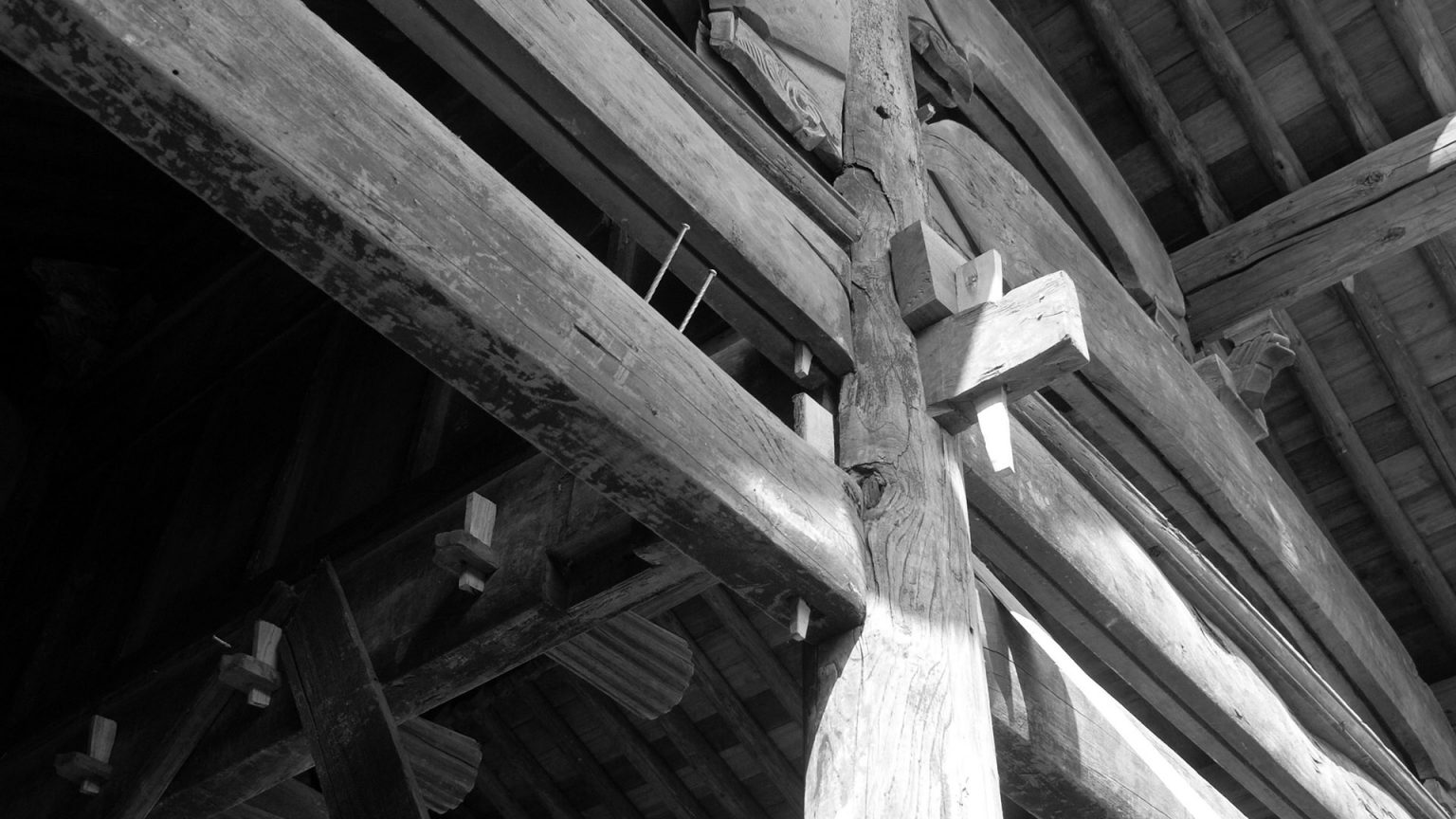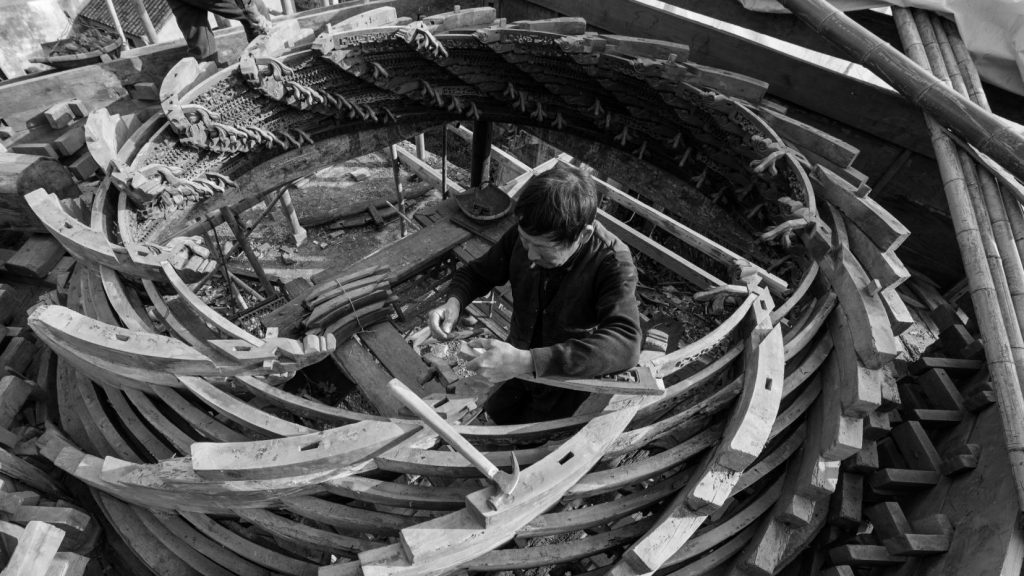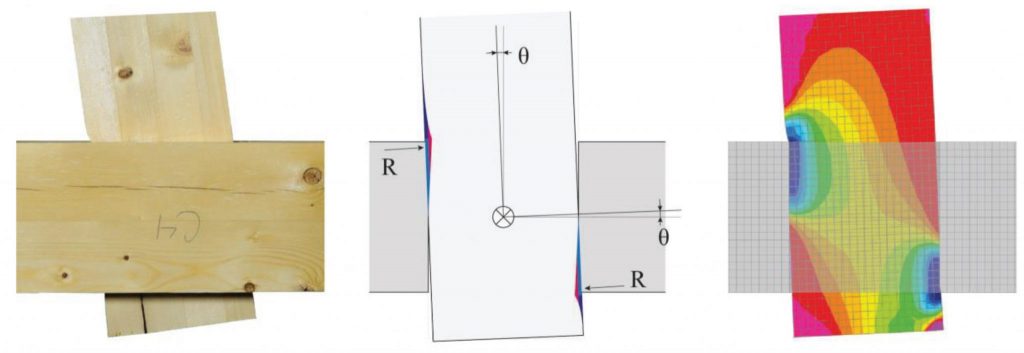vernacular timber
Interlocking timber joinery (in opposition to geometries using fasteners) has been widely used in history thanks to a number of benefits that they provide: cuts are tailored for given geometries and load transfers; connections are reversible; timber elements are disassembled and cut again for new purposes; hence allowing their reuse in new configurations. However, all available geometries for post-and-beam applications are results of incremental refinement through the ages. How should one adapt them for today’s needs? Also, what can we learn from discontinued technical solutions in vernacular timber architecture?

Reconstruction of a vernacular timber building with demolished components of different ages, 2017, Ningbo., China (Credits: Jinxian Ye).
Please note that the publication lists from Infoscience integrated into the EPFL website, lab or people pages are frozen following the launch of the new version of platform. The owners of these pages are invited to recreate their publication list from Infoscience. For any assistance, please consult the Infoscience help or contact support.
The zaojing: review of a unique wooden construction typology
The zaojing is an ancient Chinese construction system consisting of a dome-shaped assembly of interlocked wooden pieces. These structures are placed above live performance spaces to enhance sound diffusion while creating background scenery. Existing zaojings in China display a diverse range of geometric expressions, construction details, and structural behaviours. Despite their uniqueness and historical interest, very little literature about the zaojing is known to exist, and what does is not comprehensive. Building on recent field investigations in rural China, this paper sheds new light on zaojings. Following a summary of ancient Chinese construction practice, a comprehensive list of publications on zaojings is first reviewed. The paper then identifies differences between various zaojings and suggests a typological classification. Construction details and repair practices are eventually described. In conclusion, the study brings forward the typological diversity of the zaojing, a unique wooden ceiling system whose significance in the history of wood joinery construction has not yet been fully appreciated.
International Journal of the Construction History Society. 2020-06-30. Vol. 35, num. 1, p. 23-49. DOI : 10.5281/zenodo.3941502.
Related publications:
- The caisson – review of a unique wooden construction typology in China
International Congress on Construction History 2018 (detailed record) - Restoration of ancient Chinese opera spiral wooden domes, accounts of field practice
IIWC Symposium 2018 (detailed record) - The ancient Chinese opera spiral wooden domes
CHS conference 2019 (detailed record)
Please note that the publication lists from Infoscience integrated into the EPFL website, lab or people pages are frozen following the launch of the new version of platform. The owners of these pages are invited to recreate their publication list from Infoscience. For any assistance, please consult the Infoscience help or contact support.
Modern timber design approaches for traditional Japanese architecture: analytical, experimental, and numerical approaches for the Nuki joint
This work fully investigates a specific timber joinery connection via experimental, analytical, and numerical methods. The selected joint is the Nuki joint: a mortised column with through-beam tenon. The experimental approach takes advantage of digital fabrication to reduce variations introduced by hand fabrication while the analytical approach builds on state-of-the-art embedment stress models. Material tests are used to calibrate the non-linear finite element model and analysis of the connection. Furthermore, the difference in behavior between prototypes of various beam thicknesses is examined across analysis approaches. This work not only sets out a workflow for digital fabrication, physical testing, and structural analysis for more complex joinery geometries, but also discusses the challenges and relevance of its application towards a reference library of joinery connections for modern timber construction.
2019-10-07. 60th-Anniversary Symposium of the International Association for Shell and Spatial Structures, Barcelona, October 7-10, 2019. p. 2911-2918.
Related publications:
- Rotational stiffness in timber joinery connections: Analytical and experimental characterizations of the Nuki joint
ICSA conference 2019 (detailed record) - Reconsidering traditional timber joinery for sustainable structures
RCA conference 2019 (detailed record) - Structural Characterization of Traditional Moment-Resisting Timber Joinery
IASS symposium 2018 (detailed record)